Exploring Spray Polyurethane Foam Insulation: Key Features
By Editorial Team
Updated on September 13, 2024
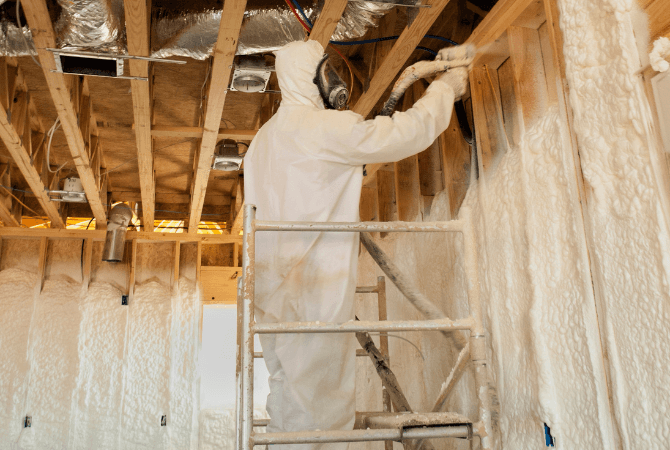
Foam insulation is a valuable product, especially since it’s lightweight and easy to install. It’s also an effective way to insulate walls and floors in your home. However little known, polyurethane foam is an amazing product that can very likely be a solution to many a problem. Since it’s particularly adhesive and effectively insulates, every year, this product enables Canadians to shield their residences from the harsh winter cold.
Sealing the Gaps: The Expanding Benefits of Spray Foam Insulation
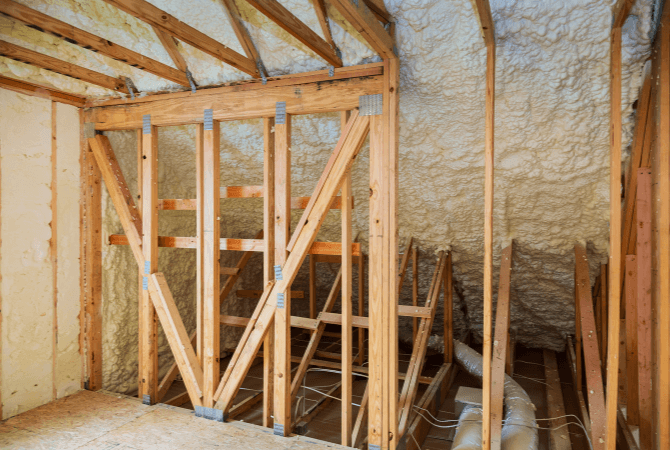
Source: Canva
Spray polyurethane foam insulation is an effective thermal and sound insulation method that can be used in a variety of cases. It’s often used in buildings since it resists well to warm and cold air, and it’s a good soundproofing material. It can also be used in vehicles, appliances, and furniture.
Spray polyurethane foam is also known as urethane. It’s the most effective and high-performing insulation material available on the market, therefore, it’s a massive hit. When sprayed, the two fluids are combined and then applied to the targeted surface. For that reason, sprayed polyurethane is also called "polyurethane foam." Once this mixture comes in contact with the target, it immediately expands and hardens. This foam can be applied to many surfaces, as long as they're more than an inch thick.
Polyurethane foam adheres to construction materials, and as a matter of fact, can be used independently, depending on the desired result.
Normally, polyurethane foam has the following characteristics:
Commercial or residential use;
R-value between 5 and 7;
Humidity resistant;
Air barrier;
Effective vapour barrier.
More detailed information about the product is available through the manufacturer, like Airmétic Soya or BASF Walltite ECO, and their data sheets. These documents are accessible on the respective company's website, and will fully describe the product in question.
Why Use Spray Polyurethane Insulation?
The benefits of polyurethane insulation are numerous and varied. It’s an excellent insulator, both in terms of thermal use and soundproofing. Since it’s in a spray form, it adequately fills in all exposed crevices, which eliminates the possibility of drafts and guarantees the overall protection of the dwelling.
Moreover, it's resistant to mould and moisture, making it ideal for damp environments. Polyurethane insulation is also fire resistant and, when it burns, it doesn't emit toxic fumes. Sprayed polyurethane has the highest thermal resistance of any insulation material on the market (R-value between R-6 and R-7 per inch).
It’s also recyclable. Thus, polyurethane insulation is an ideal material for effective thermal and acoustic insulation. This spray foam is odourless; it doesn’t smell at all, and it’s easy to paint to render invisible, yet it still resists most solvents and other chemical products. Urethane is an amazing material that allows for a quick and flexible installation, done safely.
As such, choosing spray polyurethane insulation means benefiting from a far better thermal performance than you would otherwise with other types of insulation, as well as having an air and moisture barrier in your home. Also, it adheres well to irregular surfaces, and you’ll have a clear conscience since this product is certified green.
Using Spray Polyurethane Insulation
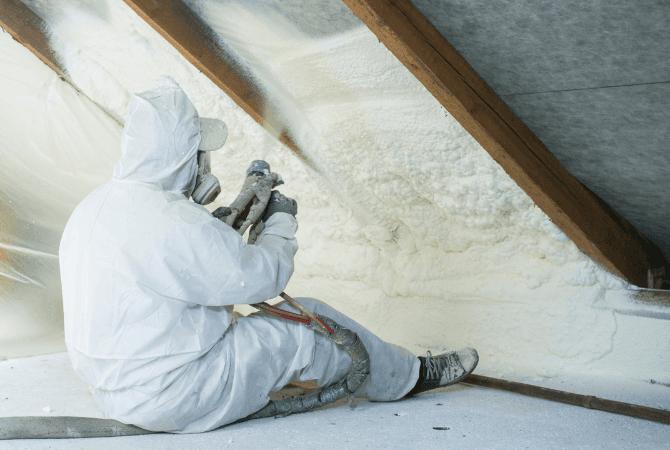
Source: Canva
Spray polyurethane insulation is an effective thermal insulation product. This technique involves spraying foam in cavities between walls, ceilings, and floors. As such, this method was specially designed for older houses and decrepit buildings since it insulates spaces without the need for major renovation or demolition work. Moreso, spray polyurethane insulation is very durable and withstands bad weather pretty well.
Where to Use the Spray:
Between the roof and attic;
A flat roof;
A cathedral ceiling;
Exterior walls;
Foundations;
Basements;
Crawl spaces;
Rim joists.
It's fairly easy to use; however, should you want to insulate large areas, it’s probably best to call in a professional technician.
Also, beware of misappropriated uses of polyurethane spray foam. In fact, the latter can’t be used in just any which way. It shouldn’t be used outdoors to seal a gas line or a ventilation duct, as the spray foam is then exposed to UV rays and will quickly disintegrate.
How to Apply Foam Insulation:
The steps to apply spray foam isulation will change depending on your project. While you should always do your own research based on your specific needs, here are some general steps to applying the insulation from a can for DIY projects:
Begin with a spray test to ensure your spray can is working properly.
Clean any debris from the surface you're going to apply the foam to.
Apply the sealent in a continuous bead to avoid any gaps.
Allow the insulation to set.
Note that urethane is flammable, albeit with very high thermal resistance. Therefore, we always recommend covering the foam with fireproof materials, such as drywall.
What is Polyurethane Spray Foam Made Of?
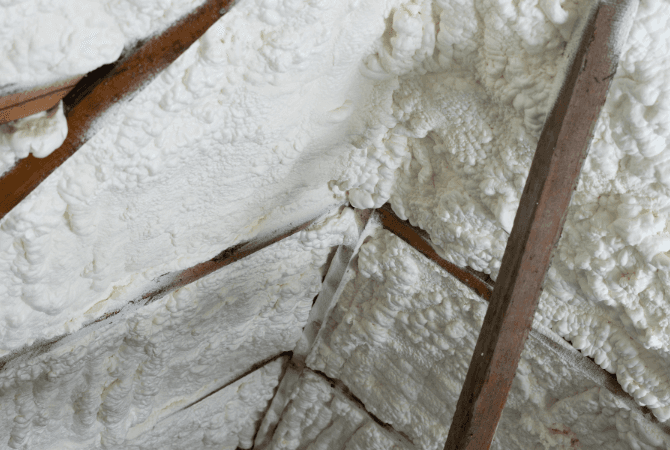
Source: Canva
Spray polyurethane foam is a versatile, eco-friendly, and durable product. It’s made with recycled polymers and devoid of any toxic substances. It’s also hypoallergenic and moisture-resistant. It’s also easy to clean and can be used repeatedly. It’s perfect for those who are looking for an ecological and durable product.
Urethane is a 4-in-1 product: insulation, air barrier, vapour barrier, and radon protection. It may contain renewable fuel as well as recycled plastics, and the foam is a super sturdy element that doesn’t crumble or flatten.
Should you want to spray foam in strategic areas, it can be rendered very cost-effective in terms of heating as the product is very effective in stopping heat loss. To do so, you’ll have to contact a professional service to insulate the inside of your foundation walls, the exterior façade (basement), the ceiling (through the attic), the joists between each level, and the floor as well.
Are you looking for experts for your foam insulation project?
Fill in this form to be connected with top-rated contractors!
How Much Spray Foam Costs and Where to Buy It
There are various foam insulation products available on the market, all priced differently. For example, closed-cell spray foam insulation is normally more expensive than open-cell spray foam insulation. However, this is explained by the fact that the former is much more effective in terms of thermal insulation and sealing against drafts. Other types of foam insulation products, such as rigid foam boards, can also vary price-wise, depending on the product’s features.
Foam insulation is for the most part more expensive than other insulation materials like wool batt insulation or cellulose considering its efficiency bypasses the latter by far. However, its steep price is quickly offset in terms of material and workforce savings. Indeed, this foam insulation is very easy to use. It perfectly adapts to irregular surfaces and creates a protective shield against the outdoors.
Account for roughly $3 per square foot for about an 8 cm-thick layer, if done by a professional.
Moreso, cost savings due to insulation are huge and quickly offset the initial financial investment. This insulation material turns out to be an excellent choice in terms of energy efficiency since it’s highly insulating and leak-proof. It renders surfaces draft-free, which is especially important in cold, northern regions of Canada.
If you're looking for foam insulation, you can easily find it in any hardware store. Amazon, Rona, and Home Depot all carry it, just to name a few.
So, if you reside in Quebec or another cold Canadian region, opt for spray polyurethane foam insulation, and benefit from highly efficient, durable insulation for your home. This insulation product is perfect for countless types of projects.
Get 3 renovation quotes for your foam insulation project
Renoquotes.com can help you get quotes for your foam insulation project. By submitting your project, we’ll put you in contact with top-rated contractors. Fill in the form on the homepage (it only takes a few minutes), and you will get estimates from trusted professionals.
Dial 1-844 828-1588 to speak with one of our customer service representatives.
Looking for something else?
Related articles
The latest industry news, interviews, technologies, and resources.

Editorial Team
•07 Nov 2023
Suffice it to say, a sweating toilet tank is never welcomed. Between puddles of pooling water on the floor, to the unpleasant feeling of condensation in the air, mould growth, and a malodorous smell, using the restroom can quickly turn into something quite dreadful. Is your toilet tank humid without fail and you’re unsure how to fix this problem? A toilet tank anti-condensation liner kit will solve the issue in no time! Check out the following to learn more about it.

Editorial Team
•24 Oct 2024
The basement area represents roughly 20% of the total heat loss in a house. If you want to renovate your basement, it's best to insulate the basement floor first, not only to improve your overall comfort but also to save on your heating and cooling bills. Are you in the middle of building a new home? Or are you simply renovating your home and looking to insulate your basement floor? Keep reading to learn more about it!

Léa Plourde-Archer
•22 Oct 2024
Are you thinking about renovating your bathroom? This process can be long and complicated, as it involves several steps, as well as a number of factors that can affect the price, the duration of the work and the durability of the materials.
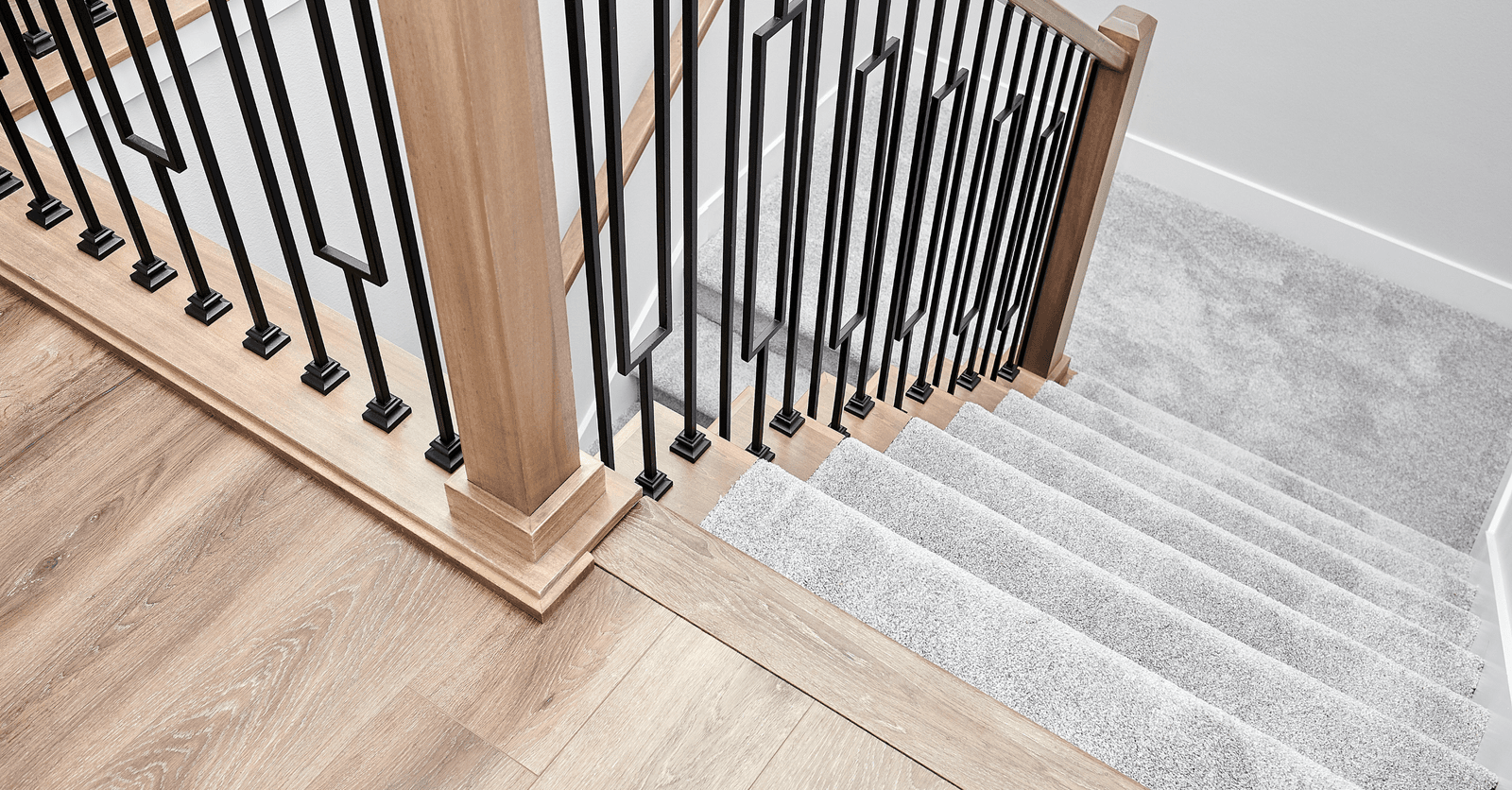
Editorial Team
•07 Nov 2023
Immerse yourself into a world of safety and comfort with indoor stair runners. These accessories convey a warm aesthetic, while also improving staircase safety. Since carpets and rugs are non-slip, they can prevent falls and protect your treads. Find out how to choose and install a stair runner that meets your needs and suits your interior décor.

Editorial Team
•07 Nov 2023
Painting the façade of a house can be a long and arduous process. However, if the work is carried out well, the transformation can be rather drastic! When a quality product is applied to a well-prepared surface, said painted surface will have a longer service life.